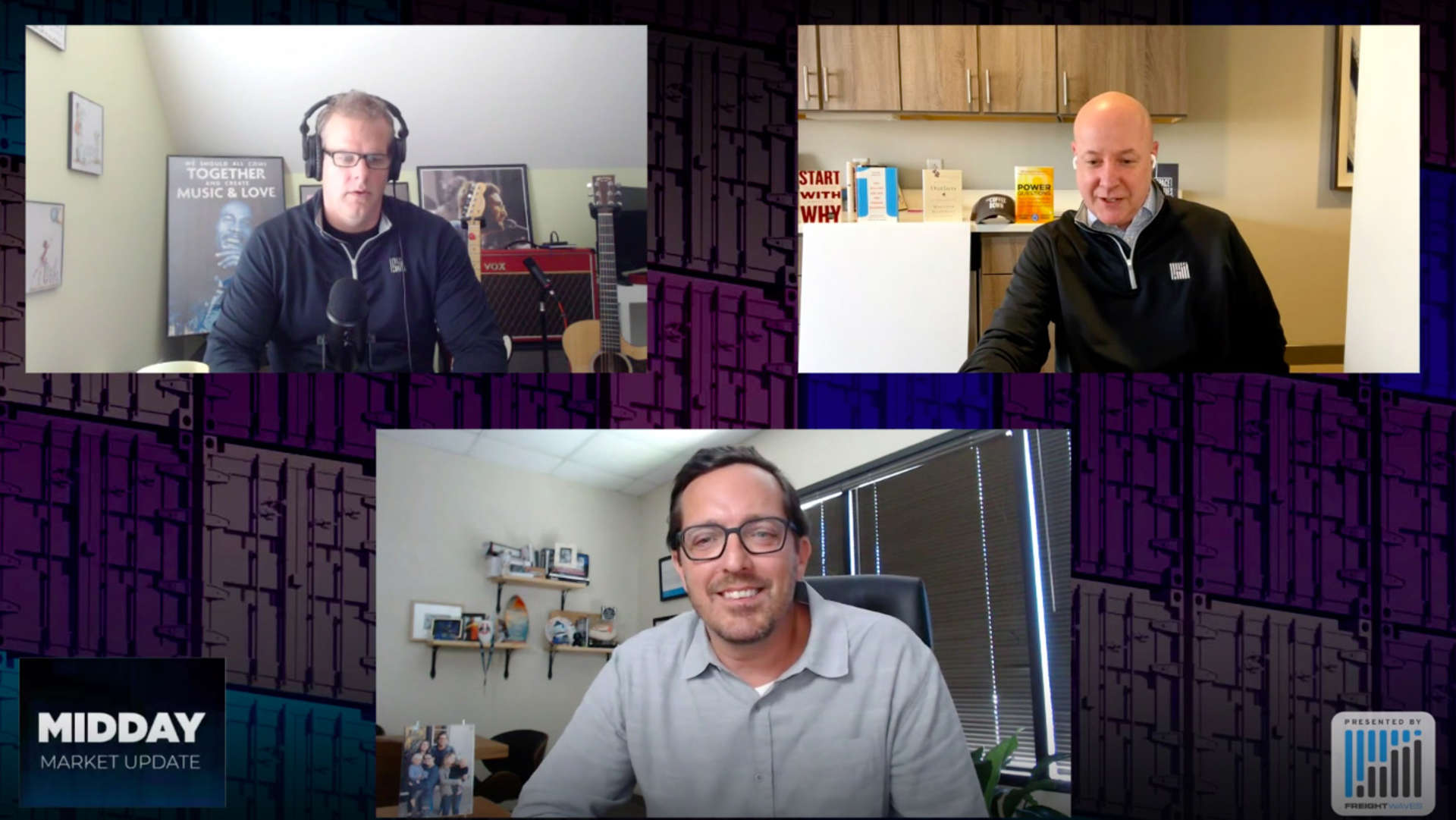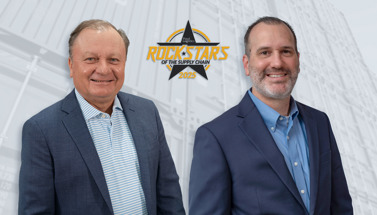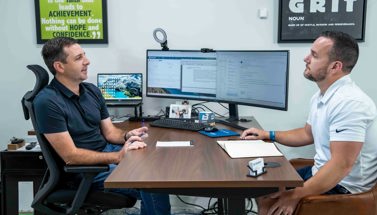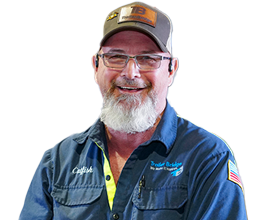
Keeping Congested Supply Chains Running In Puerto Rico & The Islands
Freight congestion issues have hit an all-time high in Californian ports as increasingly more imports arrive from Asia. But what’s been happening over on the East Coast – in the Caribbean and Latin America?
Trailer Bridge CEO Mitch Luciano joined Kevin Hill and Michael Vincent for a recent Midday Market Update at FreightWaves to offer first-hand insights.
He explains that while TB’s home port in Jacksonville hasn’t faced the same level of traffic, they have enjoyed several very successful months and that this has been the case across the entire East Coast.
“Our truck drivers are running nonstop. We’re squeezing out containers from wherever we can get them to fill our needs.”
However, the upcoming hurricane season is likely to have an impact with difficult sailing conditions and the issues involved with delivering to the Caribbean’s many shallow-water ports making delays far more likely.
Learn more about how Trailer Bridge deals with such challenges and Mitch’s thoughts on the new ELD Mandate. The transcript is included below.
Transcript: Mitch Luciano on Putting Port Congestion in Perspective — Midday Market Update
Michael Vincent: [00:33:38] TB Nation is in the house. So just put the comments down on LinkedIn and let us know what exotic pet you think Mitch would be in the comments.
But Mitch, hey, tell people about yourself a little bit, a little bit about Trailer Bridge. The nation always follows you guys around. Let’s get down to business here, man. Always insightful, you are a luminary of sorts in the business, and that’s why we have you on to find out what’s going down. So, tell us a little bit about Trailer Bridge, and let’s get into this.
Mitch Luciano: [00:34:02] So, Trailer Bridge… we’re actually going to be celebrating our 30-year anniversary here on April first – and it’s not an April Fool’s Day. It’s actually happening. We started as an ocean carrier service in Puerto Rico, and since that time, we’ve established ourselves as an ocean carrier service in Puerto Rico, the Virgin Islands, Dominican Republic… and we have rapid growth on our logistics group for domestic brokerage and our NVOCC.
So, we’ve had a great run over the last several years. We have an amazing two hundred and, I think, thirty employees now as part of the family. We’re all across the country. It’s been exciting, you know. This past year has been tough, I think, on a lot of people, but we are very fortunate to have a great group of people to fight through all this.
Congestion and Shipping Delays in Southern California
Michael: [00:34:47] Yeah absolutely, absolutely, and so, we’re…, you know. I don’t know if you were watching earlier, waiting in the green room there, but we’re talking about these incredible record-breaking backups over in San Pedro Bay out on the West Coast.
We’ve talked to other people like, you know, from Gulf Winds International, Kevin Hill and I have, and, you know, there’s talk of people moving, you know, they’re moving their freight up the West Coast or bringing it through the Panama Canal and out to the East Coast and to the gulf, etc. Are you seeing freight start to pick up and containers start to pick up over there in Jacksonville and in your neighborhood, where you guys are operating?
Mitch: [00:35:25] JAXPORT has had a very successful last several months. For us, and specifically in Puerto Rico trade and the Caribbean, we’ve been full. It’s, you know, people are… they have money to spend, and so they are spending it on consumer goods.
So, we’ve been very fortunate, and we’re… it’s been tight, it’s been tough it’s, you know, it’s… Our truck drivers, you know, they are running nonstop. We’re squeezing out containers from wherever we can get them to fill our needs. So yeah, we’ve seen an uptick, and we’ve seen the uptick across the board on the East Coast, not just here in Jacksonville. We’ve seen up and down up and down on the East Coast.
Kevin Hill: [00:36:07] Yeah, we have Becky and Samantha and Katy, Catherine… who else do we have? We have a few others: Amber, Krista.. all of TB nation is out in full force on LinkedIn, but they haven’t given us or their recommendations on what exotic pet you’d be. So, we’ve talked about… (Mitch: They make me nervous.) They might be. They might be.
Michael said, we’re always talking about, you know, the Asia Pacific, and you’re talking about the East Coast right there; what about Latin America, the Caribbean, other parts of the world? I mean, I guess is it just full-bore shipping, you know, tight capacity on the ocean market throughout the world right now?
Capacity is Tight, But That Could Soon Change
Mitch: [00:36:55] I think it is. I mean, obviously, it’s… I would venture to say that every port is having challenges in this tight capacity everywhere. We’ve seen rates out of Asia, to Puerto Rico, for example, quadruple over, you know, an 8 to 12-month span. We’ve been, you know, the carriers of the Jones Act have been stable. We haven’t raised rates even though we’re full, but there hasn’t been a need. We don’t need to do that. We need to stay a steady path, and that’s what we decided to do.
Every area is tight. I think the biggest key is finding the capacity, you know, and working with your clients to make sure that they have advanced bookings, and they know don’t ask for a load to get picked up tomorrow ‘cause that’s going to be challenging to get it shipped. I think people are starting to realize that.
But we know this is not going to last forever, you know, it’s …We hope that we’re full forever, but we also know that the economy’s going to play a role here over time. People are going to get to travel, people are going to be spending money on traveling to Puerto Rico instead of, you know, buying that new stove or new television. So, it’s going to be different going forward.
“The US gets sneezes, and the islands get the flu.”
Michael: [00:38:07] You know, Mitch, I’m wondering… There’s a lot of different dynamics in that market that you guys play in the islands, right? – All through the islands when there was the whole situation. I played in that market as well, and it’s amazing to me how the businesses that run there, and certainly the lifelines like Trailer Bridge, how serious they take their importance to those communities down there, right?
And they’ve been through some tough times. There’s a little bit of a different dynamic. It’s not like a stimulus package comes up, and therefore everybody on the island starts buying stuff, right? They’re not getting those stimulus packages. But there has been some release, I would think, of hurricane funds now and some willingness to start to release that a little bit and do some infrastructure and some preparedness, given the fact that you know, COVID cases in the United States are starting to come down, and the vaccines are going out there.
You know, the old saying is, you know, the US gets sneezes, and the Virgin Islands – the islands get the flu, right? Well, when we become healthy, they start to become healthy. And Europe as well is a strong influence down there. Are you starting to see some of that dynamic start to pick up and that, and therefore the freight coming into those islands?
Mitch: [00:39:14] You are… I just don’t think it’s to the levels that we’re seeing published out there. So, you know, under the Trump administration, he was going to release 11 billion dollars and, I don’t know. Now, under the Biden administration, it’s 8 billion, but by the time it actually gets down to the economy, it’s 20 cents on the dollar of what actually gets down to the economy.
But they are spending. I mean, you know, Puerto Rico has done an amazing job on renegotiating their debt currently and also on the power grid. There’s a huge emphasis on the power grid and getting that basically up to today’s standard or even close to today’s standard. So that’s been a lot of focus right now.
Read: How Four Supply Chain Trends Are Shaping Puerto Rico’s Future
We’re coming into hurricane season, so we have to start preparing ourselves and all the islands down there for another crazy… we expect another crazy hurricane season. I mean, 2020 and 2021 have been completely different in all levels of transportation, so we are expecting this to be a little bit unique again this year.
The Impact of Hurricane Season on Island Shipping
Kevin: [00:40:11] Let’s take a look at that hurricane season. Can you explain to our audience, and to us – to me especially, what kind of chaos does hurricane season do for maritime shipping in a normal year? What would the shocks be to the system if we had a really active hurricane system this year when capacity is so tight?
Mitch: [00:40:36] The biggest challenge is transport from port to port, right. So even though the hurricane may not impact the island you’re servicing or the areas, you still have to hold that port if there’s a threat or go way west or east of wherever you are. That delays the delivery of goods, that delays the return of empty containers, and therefore it just, it goes down the line and keeps delaying. So that’s the biggest challenge, I think.
Obviously, when one of the islands gets hit, or even here on the coast of Florida, if that gets hit, then you have a whole other challenge and issue. When Puerto Rico got hit in 2017, it was devastating to the people of Puerto Rico. You couldn’t get around the island, you couldn’t deliver goods, you know. I mean, FEMA was challenged just to get water there, but you couldn’t drive the roads. So, from the shipping standpoint, it’s the waterways. It’s making sure you can actually get there safely ‘cause you got a crew to take care of, and safety is the more important thing.
Delivering Goods to Shallow-Water Ports
Michael: [00:41:41] (Inaudible) down effect too to a certain degree, do you not? I mean, not all those islands down; they’re certainly not all deep-water ports. So, you got to have feeder vessels from the deep-water ports to the shallow-water ports right out of San Juan, out of Charlotte Amalie, I think, is a deep-water port as well in St. Thomas, right?
Mitch: [00:41:59] Right, so obviously a lot of those islands, as you’re familiar with Michael from your past, you have to have landing gear boats. I mean, you can’t just show up, and, you know, those are limited by the capacity they have on them. They are not filled with 60, 70 containers typically. There are a handful of containers, and so you’ve got to keep delivering those to the people that need them in those shallow areas.
Michael: [00:42:21] Yeah, Tropic Rainbow one TEU was the capacity – one. It went from St. Thomas to Virgin Gorda. One TEU. (Kevin: One TEU? That’s not much, is it?). No, that’s one twenty-footer, my friend, on a weekly move.
Thoughts on Canada’s Electronic Device Mandate
But, you know, so you got a lot of things going on in the domestic market as well. The CLD, or sorry, the ELD Mandate in Canada is a third-party situation right there. Do you think, just asking your opinion on the inland domestic move, you got truckers, you got drivers is that, would we have done better to go third-party right off the bat, and do you think we’ll reverse that eventually? You think this is something leading down to “Hey, we need something better”? ‘Cause you’re starting to see rhetoric of “We would have been better with just paper logs in some instances,” right? You think this is going to grow?
Mitch: [00:43:15] I don’t know. I’m going to be honest with you… The problem is, there’s so many trucking companies, so how’s one third-party…? The cost for those trucking companies, in my opinion, to fall on the guidelines, and they have been operating in a certain way to date. And maybe you’re right. Maybe from the beginning they should have done this, but to implement a third-party at this point could be incredibly costly. And then it’s, you know, how’s the third party always correct?
I’m always questioning when a third party manages something under the government’s guidance. I don’t know, I just… it’s working right now, so why, I believe it’s working, why change it? Yeah, you’re going to have some bad apples out there that are going to cheat the system a little bit, but overall, why change it? Everyone’s following the rules, in my opinion, why put another layer in there. Anytime you start adding layers, typically things not so good happen.
Kevin: [00:44:11] Yeah, you know, third party, first party… you’re always going to have problems because in society if they can be hacked, it will be hacked, right? Whether it’s paper hacking or tech hacking so… we definitely agree with you. I wish we have about 10 more minutes to talk with you, Mitch, but we need to wrap it up here. How does our audience reach out and learn more about Trailer Bridge and yourself?
Mitch: [00:44:35] Just go to Trailerbridge.com, and you’ll find all the information about Trailer Bridge on there. And if you ever need to reach out to me, you just call Trailer Bridge and ask for me – they’ll put you right through. I’m always available, and I look forward to talking to whoever wants to call.
Kevin: Great. Always a pleasure.




